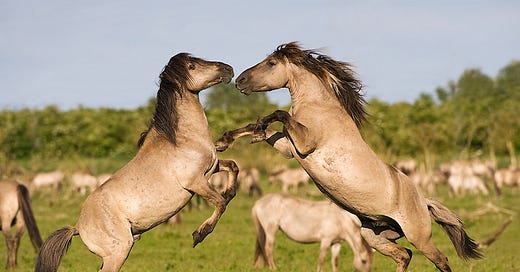People have moved plants and animals around the globe for millennia, but it is only recently that the practice has been undertaken for conservation reasons. When conservationists and ecologists move members of a species to another area it is called species translocation.
A number authors of scientific papers suggest that translocation will become an increasingly essential component of conservation. In reviewing papers published on species translocation, a team noted that from 1997 to 2020 and average of 22.6 translocations were performed per year, but since 2018 an average of 54 translocations were performed. Most of the translocations were done in North America, Oceana, and Europe.
Species translocation has a history of failure, the most common problems being monitoring difficulties, funds drying up, the quality of the new habitat, lack of knowledge and blindspots on the part of the folks running the translocation project, and lack of public support. I can attest to these problems from my experience in habitat restoration. I’ve participated in restorations in which little or no research had been done on the ecological history of the areas. No one could tell me exactly what we were restoring the habitat to. In many cases, no outreach to neighborhoods or shareholders was done to gain their support. And it was always easier to to get 100 volunteers to show up on a Saturday, plant some native plants in the ground, and grab their T shirts than to get two or three individuals to commit to weeding and tending a plot of land for the next ten years.
The team that examined the published papers on translocation may have found a prejudice in which creatures are moved. Of the 622 translocations they examined, most of the species moved were mammals, comprising 348 (56 percent) of the translocations. In descending order, the other animals moved were birds, reptiles, fish, insects, and amphibians. There were 148 translocations of plants, and seven of fungi.
Last month, 30 white rhinos were translocated 2000 miles to Rwanda, in the hope of establishing a breeding stronghold that is safer from poaching, which is the main activity threatening the species.
Climate change is spurring new translocations. For many species, such as the wide-ranging forest trees of the eastern United States, they are translocating themselves, year-by-year, with the changing climate patterns. But as many species occupy ecological niches—often exacerbated by human induced habitat fragmentation—a number of scientists and ecologists are suggesting intentionally moving species to where appropriate habitats are predicted to persist or develop.
Translocations differ in their purpose and methods. They fall into three main types:
Reintroductions try to reestablish, in full or in part, species in their historical ranges.
Supplementations enhance and reinforce a species population by increasing the population’s numbers and genetic diversity.
Assisted Migrations move species from threatened or degraded habitat to new habitats.
In the process of rewilding, species will be introduced to a rewilded area to perform the ecological function of other species, particularly keystone species, that have gone extinct. To keep open grassland from changing into forest at the rewilded Oostvaardersplassen Nature Preserve in the Netherlands, wildlife managers introduced Heck cattle and Konik horses—both domesticated or semi-domesticated animals—to perform the ecological functions of aurochs and tarpans. Aurochs, large European ungulates, went extinct in the 17th century. The last tarpan died in a Russian zoo in 1909.
Much is still not known about translocating. As so many scientific papers reiterate, more research needs to be done.
For more environmental news follow me on Twitter @EcoScripsit.






Interesting. Species relocation is relatively common in New Zealand, mainly reintroduction of species that had been wiped out by predators to areas where predators had been removed. There's a rather unusual one near where I live of a snail that was moved from a forest fragment tens of kilometres away to near me. Sometimes I come across the snails when I'm walking in the bush and I think about that translocation.